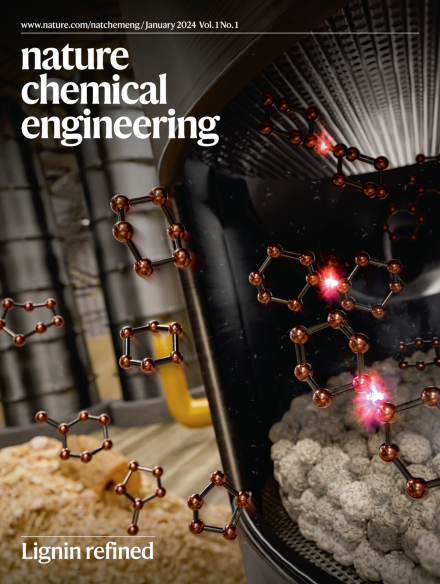January 19, 2024
Cole DeForest, Weyerhaeuser Endowed Professor of Chemical Engineering and associate professor of bioengineering, has co-authored a comment article in the inaugural issue of Nature Chemical Engineering.

Source: Nature Chemical Engineering
In this publication titled “Engineering native biological complexity from the inside–out and outside–in,” DeForest and co-authors from the University of Colorado provide perspective on the strengths chemical engineers are bringing to advance regenerative medicine, and how they are equipped to develop new tools in biomaterials design to propel these efforts forward.
Through the use of computational models and machine learning, engineers can expedite the collection of data necessary to ultimately inform strategies in biomaterials design, cellular reprogramming and tissue engineering. With the abundance of information accessible through the use of these tools, DeForest provides perspective as to how engineers can use it to manipulate changes at the molecular level and scale up to tissue-level function.
“Such systems use unit operations principles (that is, separations, pumps and reactors) to simulate individual organs and processes in a minimal ‘human body,’ achieving more realistic pharmacokinetics and pharmacodynamics for testing drug safety, efficacy or delivery methods,” says DeForest and co-authors.
The article highlights the synergy between chemical engineering, biomaterials science and cell biology to create accurate tissue models. Because light can penetrate native tissue to some degree, using light can give engineers dynamic control over cell signaling in living organisms. This approach could eliminate the need for animal testing, a method that comes with ethical and practical drawbacks.
DeForest concludes the article by stating that chemical engineers thrive in their ability to draw upon drafted blueprints in creating high-value products from lower-value starting materials. In the case of biology, this can look like creating functional tissue or accurate disease models from polymers or adult cells, when applying standard unit operation-based principles.
Go to the source
DeForest, C.A., Kirkpatrick, B.E. & Anseth, K.S. Engineering native biological complexity from the inside–out and outside–in. Nat Chem Eng 1, 2–5 (2024).